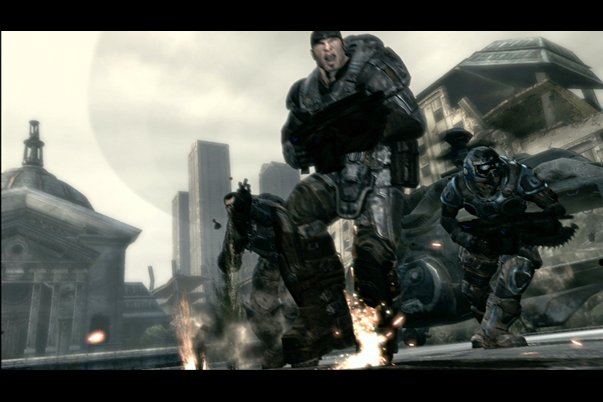Us versus them
We mercilessly mow down screaming Gears of War fans
Maybe it was the giant subwoofer of the THX theater at San Francisco's Sony Metreon (hah, Sony!), but the bass of Gears of War grabbed us by the diaphragm and shook us around like a dog's chew toy... covered in gravy. This game is oppressively atmospheric and visceral like a sock in the gut. The thick, chunky sound effects mixed brutally with the onscreen violence (complete with near-constant camera splattering gouts of blood) to create an experience so immersive that it's probably better described as submersive. Gears of War doesn't just suck you into its post-apocalyptic hellscape, it bulldozes right over you, crushing you into the ash-covered, shattered concrete.

We had some difficulty initially with the vast array of contextual actions available - sometimes if you press the X button you'll heal a teammate and other times you'll stomp a foes face into the ground with a satisfyingly gooey crunch. Our disorientation didn't last long, however, and we realized that our confusion over the controls was a symptom of how deep and complex Gears of War is. Far from your average run-and-gun shooter, Gears requires tactics and precision that resemble Ghost Recon Advanced Warfighter more than Halo.
The focal point of the game is teamwork, and the teams that stuck together hosed their opposition every single time. You need to cover each other all the time, so this means keeping a close proximity with all of your cohorts. In the team deathmatch mode we played, each player had only a single grenade, so there wasn't much chance for the whole group to get taken out by one.
Despite our previous skepticism about Gears of War, we were humbled by the magnificence of it in person. Now, November can't come soon enough, because we need to log several hundred more hours on this one.
Weekly digests, tales from the communities you love, and more


